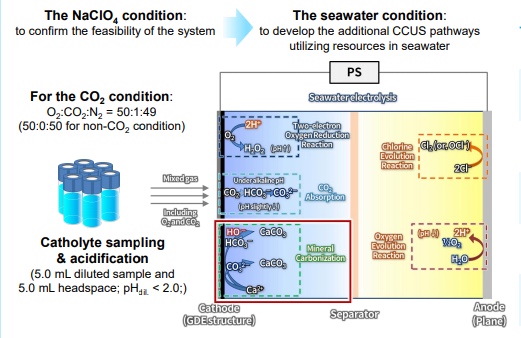Publication
Advanced Redox Technology Lab
Publication
Advanced Redox Technology Lab
Conference Abstract
Carbon Capture, Utilization, and Storage (CCUS) technology is getting attention as a key solution for the "hard-to-abate" carbon emissions sector [1], and the CCUS process is usually started by the capturing of CO2 from feed gas of wide range of CO2 concentrations, such as flue gas or even the air. Unfortunately, even though many types of capturing methods have been proposed, energy and/or economic issues arise from the CO2 capture processes, as other CCUS processes are [2-3]. Considering that overhead of CCUS projects are tried to be reduced by built near the CO2-point sources or integrating existing resources [4-6], implantation or integration of the CCUS technologies with another well-known techniques can be a practical answer to such challenges.
Gas diffusion electrode (GDE) can be a good option for this integration, because it can remarkably reduce the mass transfer limitation of the gaseous reactant by directly supplying them to the electrode surface. Such benefit has also made many researchers develop the GDE for the CO2 reduction reaction, but the presence of local pH near GDE hinders the system to be fully developed. However, in the aspect of CO2 capture, utilizing the alkaline local pH can accelerate the capturing of CO2. Also, the GDEs with carbonaceous electrocatalysts are known to be selective and active toward the O2/H2O2 reaction, where an energy resource is generated. Such selectivity can reduce the complexity of the reaction products at the end of operation, and the active two-electron oxygen reduction reaction (2e-ORR) on the carbonaceous GDE can reduce the energy and costs to form the alkaline local pH on the GDE surface compared to other electrochemical reduction reactions.
The objectives of the present study are (i) to assess the feasibility of the simultaneous H2O2-production & CO2-capture system, and (ii) to develop the potential applications of the suggested system.
